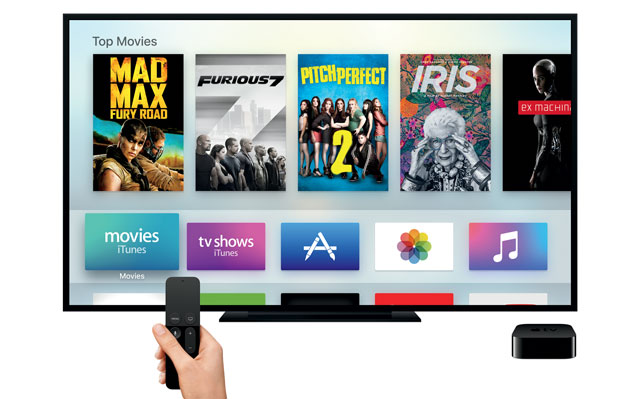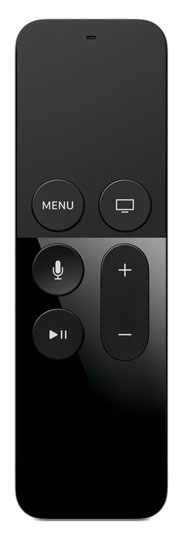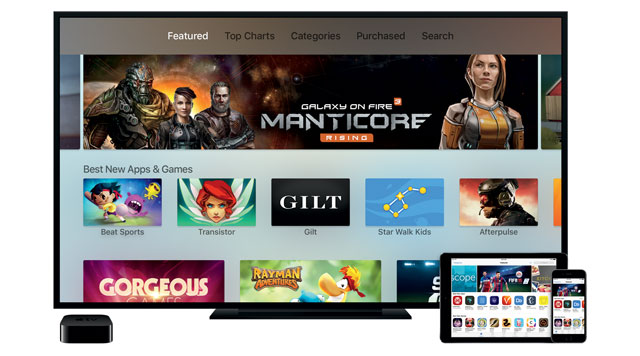 Perhaps the most surprising thing about Apple’s announcement of its assault on your living room was the matter-of-fact way it revealed it. Apple didn’t need to build a TV after all (although it surely tried, given the rumour-mill in recent years).
Perhaps the most surprising thing about Apple’s announcement of its assault on your living room was the matter-of-fact way it revealed it. Apple didn’t need to build a TV after all (although it surely tried, given the rumour-mill in recent years).
Rather, Apple announced a fundamental overhaul of the TV set-top box that many of us have in our homes. From the outside, it looks slightly taller. But the magic is (as is always the case with Apple) in the hardware and software (and how they work together).
“This is the future of television, coming now,” is how Apple CEO Tim Cook described it.
We know the current TV paradigm is broken. Channels and lists and lists and search, which hardly works. Too much content to know about. Too much content that’s hard to find or discover. Content in silos. Cook made the obvious point that the “television experience itself hasn’t changed that much in decades”. It’s been “virtually standing still while innovation has been thriving in the mobile space”.
We’re all spending more and more time on our computers and mobile devices, especially when in front of the TV. An entirely new category of apps and content targeted at the so-called “second screen”, a companion (or distraction) to what you’re watching, has emerged.
“The future of television is apps,” declared Cook.
Thing is, we’ve known this for a while. Analysts, journalists and even some consumers have been wondering when Apple would bring apps to the TV. And Apple isn’t the first company to bring apps to the living room (Amazon, and TV makers like Samsung and LG have had apps — in various incarnations — on their platforms for some time).
Instead, Apple drifted on over the past five years with its Apple TV “hobby”, which required custom integrations for content providers. There simply wasn’t any way for developers to build native applications for the TV.

It’s newly announced tvOS (which slots in neatly alongside iOS and watchOS, and dare I suggest it, MacOS?) enables developers to target Apple TV for the first time. Apps are bundled so if you buy an app on iOS and there’s a TV app available, you have that too.
Now sceptics will be wondering why the tech world’s so excited about being able to Facebook from your TV… That’s not the endgame here. Sure, expect a few false starts with native apps for the phone slammed onto a big (landscape) screen. We’ve seen that with the Apple Watch. The real innovation comes when developers “crack” the new paradigm. TechCrunch’s Josh Constine sums it up well: “Apple wants to get developers’ minds swirling with ideas for what they could build.”
Periscope, the live video-streaming app, is rumoured to be working on a TV app. Shifting the focus from creation (on iPhones) to consumption on the TV would be interesting. But what if there’s something more to it?
What does the TV’s big screen and the new remote (more on that in a bit) offer that other pieces of glass (iPhones, iPads, Macs, Apple Watches) don’t?
Instagram, my favourite example, was not possible on anything but a smartphone. It doesn’t translate well to a tablet (or the Web, for that matter), which is why there’s no tablet app. This is what’s exciting about the TV (and the Watch). These are new paradigms entirely. Compelling new apps will be invented. We’ve seen this movie before.
 Apple’s got some views of where developers could start focusing their attention. Games are obvious. Video (and content) as well. Shopping was also introduced as a sort of “tent pole” pillar on the TV. Is the way we shop (for certain things) about to change? Will shopping (again, for certain things) become a more social activity in our homes?
Apple’s got some views of where developers could start focusing their attention. Games are obvious. Video (and content) as well. Shopping was also introduced as a sort of “tent pole” pillar on the TV. Is the way we shop (for certain things) about to change? Will shopping (again, for certain things) become a more social activity in our homes?
Tell me what Airbnb has done on the Apple TV doesn’t look cool…
But, while there’s been a ton of attention on apps since the company’s “Fall Event” on Wednesday night, they’re only one half of the TV puzzle. I’d argue the far more important announcement was the new remote. Gone is that horrible infrared thing with a handful of buttons. Gone is the awkward clicking up and clicking left and hitting “OK”. Gone is the anxiety-inducing on-screen keyboard, which required a five-minute clicking marathon just to input a password or a keyword for search.
And it’s not about just the hardware. This is a hardware and software problem. It’s about how we interact with the content on our TVs, how we experience it.
The new remote has a glass touch surface at its top, which means you interact with (the content on) your Apple TV in much the same way as you’ve become used to on smartphones and tablets. Swiping, scrolling and selecting is suddenly significantly easier. The remote also has a built-in accelerometer and gyroscope — like the Nintendo Wii ones — which means interaction is possible in 3D. (And, it basically solves the game remote problem.)
But, it’s the addition of Siri on the remote that holds the most promise. Apple’s natural language search has come a long way. It hardly worked for much of the first year or two on the iPhone. See, natural language search is a complex problem to solve. Apple’s been making steady progress. It was only after the launch of Apple Watch (in tier-one markets) in late April that people started taking notice. And using Siri.
On the Watch, Siri is really good. Almost to the point of being surreal. And the improvements available on iOS 9 in a week’s time suggest that Apple’s confident that it’s solved this problem. When Steve Jobs, according to the Walter Isaacson biography, said “I finally cracked it” in reference to the TV interface, did he mean Siri?
The demos by Apple on Wednesday night were compelling.
Hit the Siri button and say “What did she say” and whatever you’re watching rewinds 15 seconds. Cute. Those are simple interactions.
Where Siri shines is how it redefines search. “I’m in the mood for action movies,” you might say. “Show me the James Bond ones” will instantly filter the list of content on screen. And asking for “just the ones with Sean Connery” will deliver exactly what you expect.
You can search while watching something too and results display at the bottom of the screen. For one, it means (much?) less Googling on your phone. There is some powerful artificial intelligence at work here. And with voice interaction (and natural language voice processing), the more people who use it, the more powerful (and useful) it becomes.
Siri — especially search and discovery — changes quite a bit.

I haven’t quite embraced Siri on my iPhone. But, given the inherent input limitations of the Watch, I’ve found myself using it more and more frequently. I’m not alone. Already, the primary interaction method for many people on the Apple Watch is Siri. Any bets that this is the case with the TV, too?
The new Apple TV (rather hilariously officially called “the new Apple TV”) doesn’t change much for pay-TV operators, though. As long as their content is available on the platform.
Much of the video content demoed on Wednesday was US centric … Hulu, HBO, Showtime and Netflix were highlighted. Only the latter has any ambitions of launching in this country (and indeed in most markets around the world). Complex rights and licensing issues may have forced Apple to pare back its original ambitions to shake up the content space. For now, the status quo remains. (If I were to bet, I’d expect that to also change in the next year or two.)
But what if the apps and other (non-premium/pay-TV) content available on the Apple TV start eating into our attention? They already are! This may just entrench that habit. Time spent watching TV is in decline in most markets globally. With everything else that’s available, will we spend even less time watching TV?
We’ll see…
- Hilton Tarrant works at immedia, specialists in native mobile app and Web development
- This column was first published on Moneyweb and is republished here with permission
- Subscribe to TechCentral’s free daily newsletter




